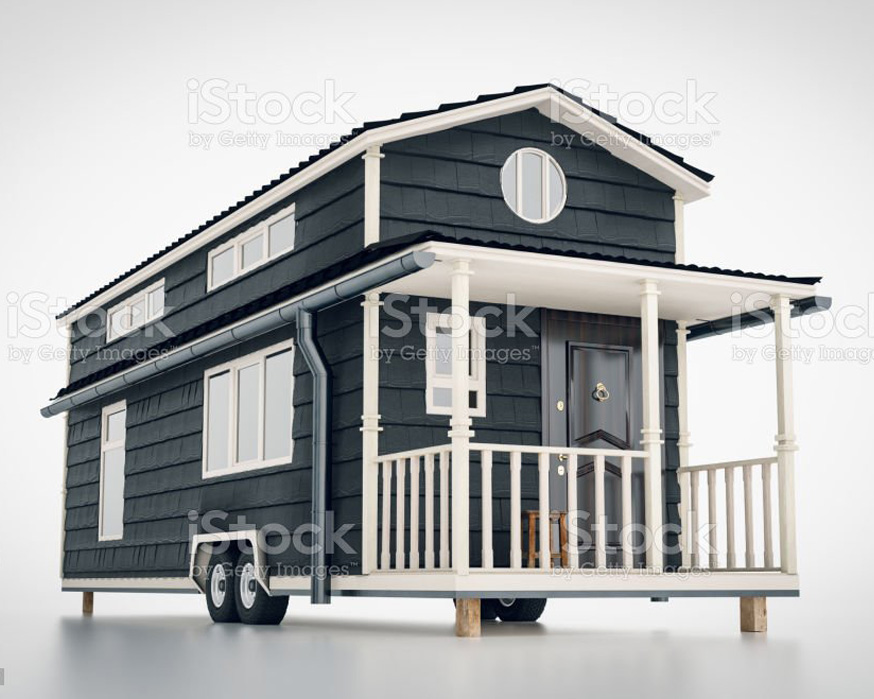What Is The Difference Between A Tiny Home On Foundation
(THOF) And A Tiny Home On Wheels (THOW)?
Micro, Tiny, or Small homes are used to describe a broad range of living arrangements in a broad range of climates. In this context, we find it helpful to define our “tiny homes” using the technical and regulatory requirements that are available through the National/Ontario Building Code, the Canadian Standards Act, or the Canadian Recreational Vehicle Association certifications and standards. Independent audits confirm compliance to the technical and regulatory requirements and provide assurances that our tiny homes are built for their intended use and can be legally located on land that is zoned for their application. Due to the affordable housing crisis, we are currently focusing our efforts on the design and production of Tiny Homes on Foundations.
Tiny Home on Foundation (THOF)
- a) with a living and dining area
- b) with a kitchen and bathroom facilities
- c) with a sleeping area
- d) intended for year-round use
- e) minimum size is 188 square feet, 2 permit size is up to 398 square ft, single permit size is 399+ square feet
4 seasons building anchored onto a permanent foundation
In Ontario, governed by the Ontario Ministry of Municipal Affairs and Housing
- a) applicable National/Provincial Building Codes
- b) CSA Z240 MH (manufactured home) building code
Placed on residential lots zoned for this type of home, either as a primary or secondary dwelling unit (often described as an ADU, accessory dwelling unit)
Tiny Home on Wheels (THOW)
- a) it is built on a single chassis mounted on wheels
- b) it is designed to facilitate relocation from time to time
- c) it is designed as living quarters for seasonal camping and may be connected to those utilities necessary for operation of installed fixtures and appliances; and
- d) it has a gross floor area, including lofts, not exceeding 538 sq ft when in the setup mode, and has a width greater than 8.5 in the transit mode
3 seasons vehicle using wheels and temporary or permanent piers for stability
In Canada/Ontario, governed by the Canadian Recreational Vehicle Association (this adds the requirement of a RV license plate)
- a) CSA Z241 Series for “Park Model Trailers”
- b) CSA Z240 RV (Recreational Vehicle)
- c)NFPA 1192 (United States) Certification for Recreational Vehicles
Placed on residential lots zoned for this type of home, either as a primary or secondary dwelling unit (often described as an ADU, accessory dwelling unit)

